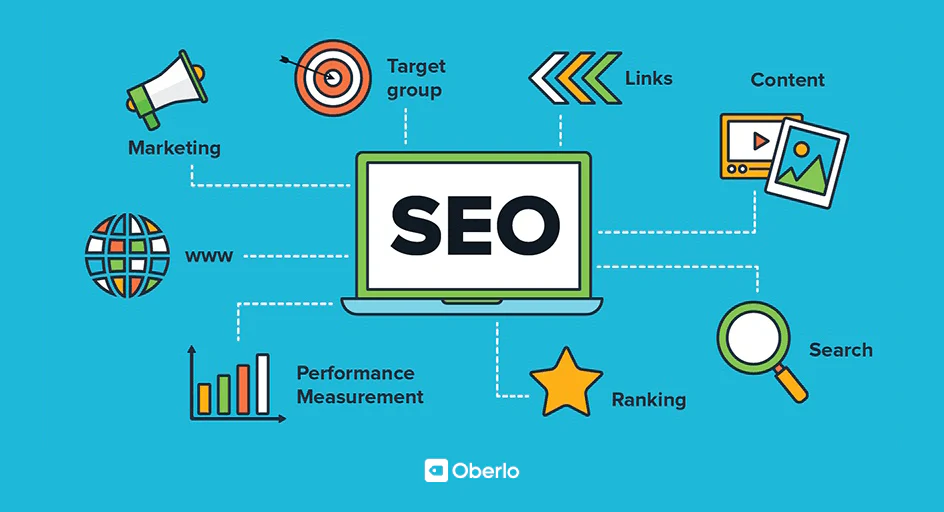How to Utilize Local Insights for Better seo adelaide Performance
Wiki Article
Comprehending the Function of User Experience in Modern Search Engine Optimization Practices
In an era where electronic presence can make or damage a service, understanding the crossway between individual experience (UX) and modern search engine optimization techniques is more essential than ever before. As search engines evolve, they progressively focus on websites that use smooth, engaging experiences to individuals. Components such as site rate, mobile-friendliness, and instinctive navigation are no much longer simple improvements; they are critical to search engine optimization success. Exactly how do these aspects exactly influence search rankings? And how can companies guarantee their digital web content not only fulfills yet exceeds progressing assumptions? These concerns develop the foundation of a critical discussion.The Development of Search Engine Optimization
Over the years, the landscape of seo (SEARCH ENGINE OPTIMIZATION) has actually undergone significant makeover, mirroring the dynamic nature of electronic innovation and customer behavior. Initially, SEO was primarily concerning keyword padding and link-building methods, concentrating greatly on manipulating search engine formulas to enhance internet site positions. However, as online search engine came to be a lot more sophisticated, these techniques started to lose performance and importance.
In addition, mobile optimization and voice search have become integral components of search engine optimization approaches. With the expansion of mobile phones, guaranteeing web sites are mobile-friendly has actually become a necessity. Voice search, driven by digital aides like Siri and Alexa, has actually even more shifted SEO methods towards natural language processing and conversational content.
Basically, the advancement of SEO mirrors a more comprehensive pattern in the direction of boosting user satisfaction by straightening electronic content with the nuanced expectations of modern individuals.
Key UX Aspects in SEO
In the realm of search engine optimization, key individual experience (UX) components are vital for enhancing both customer satisfaction and internet search engine positions. Central to this is the ease of navigating, which makes certain individuals can intuitively find info without unneeded clicks. A well-structured navigating system makes it possible for online search engine to index web pages better, adding to higher presence. Furthermore, mobile responsiveness is vital in today's digital landscape, as a substantial section of web website traffic stems from smart phones. Websites enhanced for mobile use not just cultivate a smooth individual experience yet likewise straighten with Google's mobile-first indexing approach.One more vital UX element is engaging web content layout. Web content needs to exist in a fashion that is both easy and aesthetically appealing to absorb. This involves the tactical use headings, bullet factors, and multimedia elements, which can enhance customer engagement and decrease bounce prices. In addition, clear call-to-action (CTA) buttons assist customers in the direction of wanted activities, improving conversion rates. Last but not least, access can not be overlooked; ensuring that content is obtainable to individuals with disabilities broadens reach and abide by web standards. Integrating these UX aspects effectively sustains SEO initiatives by promoting customer retention and helping with search engine understanding of site content.
Effect of Site Rate
While frequently underestimated, the influence of website speed on customer experience and search engine optimization can not be overstated. In today's busy electronic environment, users anticipate internet sites to pack quickly and successfully. Google has actually acknowledged this demand, including website rate as a critical ranking consider its search algorithms. A slow-loading site can result in increased bounce prices, as customers are most likely to abandon a site if it takes even more than a few seconds to load. This not only impacts individual involvement yet also reduces the internet site's exposure in search engine results pages (SERPs)In addition, site rate straight influences conversion prices and user complete satisfaction. Research shows that also a one-second hold-up in web page load time can cause considerable reductions in client complete satisfaction and conversion probability. This emphasizes the necessity for services to focus on website speed optimization as component of their search engine optimization strategy. Reliable actions include enhancing images, leveraging browser caching, and minimizing HTTP demands. By dealing with these technological elements, websites can enhance their speed, consequently boosting customer experience and enhancing their SEO performance. Inevitably, spending in site rate is buying both consumer contentment and online search engine visibility, essential elements in the electronic market.
Mobile-Friendliness Significance
Adapting to mobile-friendliness has become an indispensable part of efficient search engine optimization techniques. As mobile phones increasingly dominate net usage, internet search engine like Google have actually shifted towards mobile-first indexing, meaning the mobile version of a website is prioritized in ranking formulas (seo adelaide). Mobile-friendliness is not just a fad but a requirement in maximizing a website's More Info search engine performance
Additionally, mobile-friendliness effects neighborhood SEO significantly. As individuals typically browse for local info on-the-go, having a mobile-optimized website boosts exposure in neighborhood search outcomes, driving foot website traffic and conversions for businesses. Internet sites that stop working to focus on mobile-friendliness risk shedding out on important website traffic, as individuals are much less most likely to engage with sites that are difficult to navigate on their mobile phones. Consequently, incorporating mobile optimization right into search engine optimization methods is critical for sustaining affordable benefit in the electronic landscape.
Enhancing Navigation for SEO
As services identify the need of mobile-friendliness in search engine optimization, one more essential aspect emerges: improving navigation - seo adelaide. Reliable navigating is critical as it straight influences customer experience (UX), which online search engine significantly focus on. A well-structured website makes sure that customers can easily locate the material they are seeking, decreasing bounce prices and enhancing dwell time, both of which are important SEO metricsTo improve navigating, internet sites have to embrace a logical hierarchy that overviews users seamlessly via content. This consists of clear, concise menu labels and an instinctive format, which collectively streamline the individual trip. Employing breadcrumb trails can better aid customers in understanding their area within a web site, promoting a sense of alignment and control.
Ensuring navigating is responsive across tools warranties that users appreciate a regular experience, vital in today's multi-device world. Ultimately, enhancing navigation is not check over here simply regarding aesthetics; it is a calculated strategy to optimizing both customer engagement and search engine performance.
Conclusion
Incorporating individual experience right into contemporary search engine optimization techniques is critical for maximizing search engine rankings and improving internet site efficiency. As online search engine prioritize customer intent, essential components such as site speed, mobile-friendliness, and intuitive navigating play a vital function in meeting customer expectations. By concentrating on these facets, websites can reduce bounce prices and boost engagement, straightening electronic content with individual needs. This strategic alignment ultimately results in enhanced presence and greater conversion rates in a progressively competitive electronic environment.In the realm of search engine optimization, essential user experience (UX) components are vital for improving both user fulfillment and search engine positions. Incorporating these UX aspects efficiently sustains SEO efforts by promoting individual retention and helping with search engine understanding of site material.
As individuals commonly look for regional info on-the-go, having a mobile-optimized website boosts exposure in neighborhood search results, driving foot web traffic and conversions for businesses.Incorporating customer experience right into modern-day SEO practices is paramount for enhancing search engine positions and enhancing website performance. As search engines focus on customer intent, critical aspects such as site speed, mobile-friendliness, and intuitive navigating play an important role in meeting user expectations.
Report this wiki page